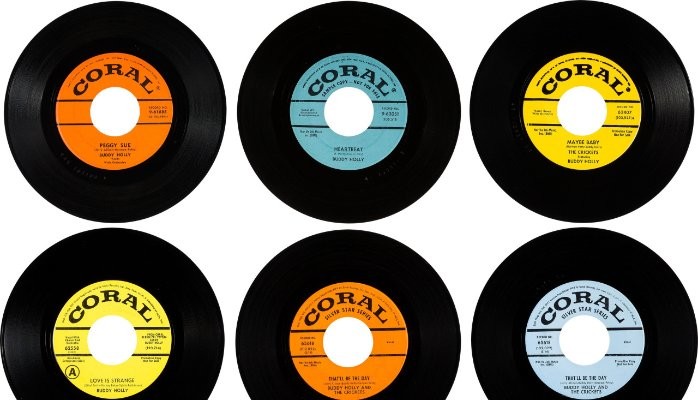
The Resurgence of the Vinyl Single: The 7" 45rpm Record
By Michael Greig Thomas
Founder @ 45s Club
The 45rpm record was initially introduced in 1949 by RCA Records as a smaller, more durable replacement for the heavy 78 shellac-based records of the time. It was also a competitive move against one of their rival record companies, Columbia, which had just introduced the new microgroove 33 1/3 rpm LP.
The 45-rpm record could hold as much sound as the 12″ 78 rpm discs, but they weren’t as big. In order to make the disc smaller, the speed was reduced to 45-rpm and a much finer groove was used. This meant that more grooves could be packed into a smaller space, and more detail could be included within the grooves themselves, creating a richer, more faithful sound and providing listeners with a more authentic “live” experience.
RCA described the 45 in their original press release as “the finest record ever made” and claimed that “more than 150 single records or 18 symphonies fit in one foot of bookshelf space”.
Presenting The World’s Fastest Record Player
Once the RCA introduced the first 45-rpm phonographs, advertised as “The World’s Fastest Record Players”, they knew the importance of having not just one-45 rpm record available, but a selection of different artists and styles from which buyers could choose. So, in February 1949, they mixed a little of everything in with the very first batch of 45s shipped to record stores. They arrived with a message:
“This Is Your Preview of the New RCA Victor 45 R.P.M. RECORD LINE! Inside are seven singles, each of which is made using a different color plastic – each color representing seven different musical styles.”
The seven musical styles were:
Popular: Black
Classical: Red
Popular Classical: Midnight blue
Children’s: Yellow
Country and Western: Green
Blues and Rhythm: Cerise
International: Sky blue
The 45-rpm record was introduced to the public with great fanfare, providing consumers with a practical, attractive and unique solution, and it would become a hit for generations to come.
The Revival Of The Golden Era
Although the 45-rpm record enjoyed many decades of popularity, the arrival of the compact disc in the 1980s severely curbed production. Sales dropped rapidly and most major label record companies had all but ceased production by the early 1990s. It was, therefore, a big surprise when, despite an explosion in digital and streaming music, vinyl records made an unexpected comeback last decade, and popularity has been steadily growing since.
Thanks in part to growing popularity amongst young millennials, vinyl has experienced a minor resurgence in the mainstream, with many of today’s top 40 artists now issuing their records on vinyl formats with a limited pressing run. Vinyl is, once again, “where it’s at”.
The Vinyl single is still one of the highest resolution sources of music distribution available, and many people still prefer vinyl, whether for the sound quality, the nostalgic appeal, or simply the beauty of a vinyl record as a design object.
A vinyl album spinning on a turntable has a tangible and artistic “realness” that blows away MP3s, while liner notes, colored vinyl, and the delicate sound of the needle hitting the groove are once again becoming anticipated experiences for vinyl fans young and old.